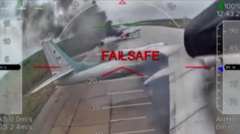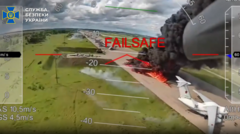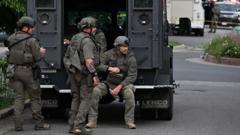### Summary: As Ukraine escalates drone strikes against Russian targets, NATO realizes the urgent need to adapt to new forms of warfare. Experts underline the significant implications for defense readiness across Western nations.
### Title: Drones Redefine Warfare: The New Reality for NATO and Global Security

### Title: Drones Redefine Warfare: The New Reality for NATO and Global Security
### Description: The recent surge in drone attacks during the Russia-Ukraine conflict highlights a transformation in modern warfare, exposing vulnerabilities in NATO's defense strategies.
The ongoing conflict between Russia and Ukraine is marking a pivotal transformation in military tactics, particularly with the rise of drone warfare. Recently, Ukraine's forces executed a significant strike involving numerous drones launched across the border, targeting Russian air bases and inflicting heavy damage on military assets. This wave of attacks has sent shockwaves through NATO nations, prompting urgent evaluations of their own defenses against similar capabilities.
With drones becoming a core component of battlefield strategies, the conflict illuminates a pressing concern: the readiness of NATO to counteract this evolving threat. Experts emphasize that these developments offer a crucial illustration of future combat dynamics, where traditional battlefronts may not hold. James Patton Rogers, a noted authority on drone warfare, conveyed that these incidents compel NATO to scrutinize the vulnerabilities present within its air bases and broader military infrastructure.
Inresponse to the rapidly changing landscape of warfare presented by Russia's increasing use of drone technology against Ukrainian civilians and facilities, NATO has initiated collaborative training efforts in Poland with Ukrainian forces. This integration aims to facilitate crucial knowledge transfer regarding modern combat tactics and strategies, recognizing Ukraine's military experience as pivotal amid ongoing hostilities.
As military manufacturers in the West grapple with production challenges, the urgency to adapt and innovate grows. Western defense establishments are not just faced with the need to evaluate their current strategies; they must also actively seek forward-thinking solutions and address potential weaknesses exacerbated by this drone warfare paradigm.
In a landscape marked by uncrewed aerial vehicles, it is vital for NATO and its member countries to reassess and enhance their military protocols to ensure resilience against the indiscriminate reach of drones, paving the way for preparedness in future conflicts.























